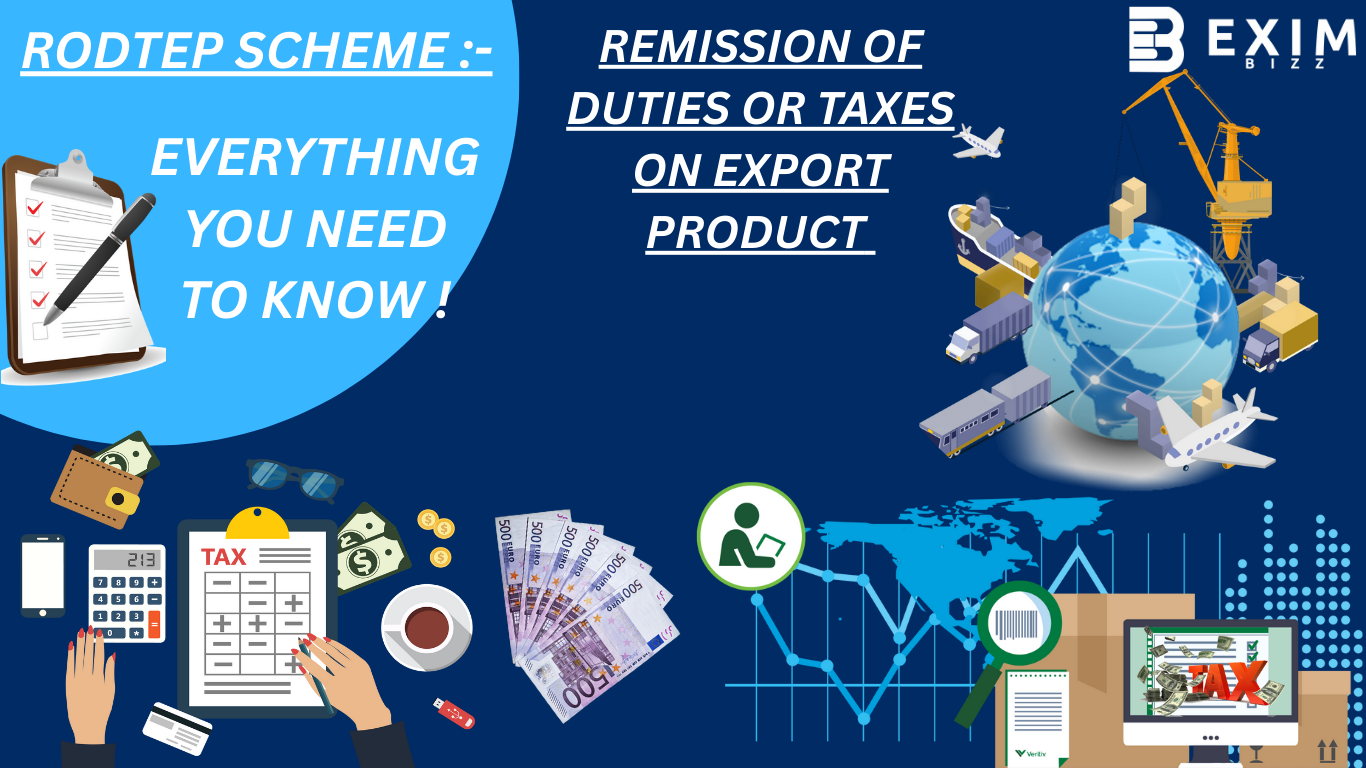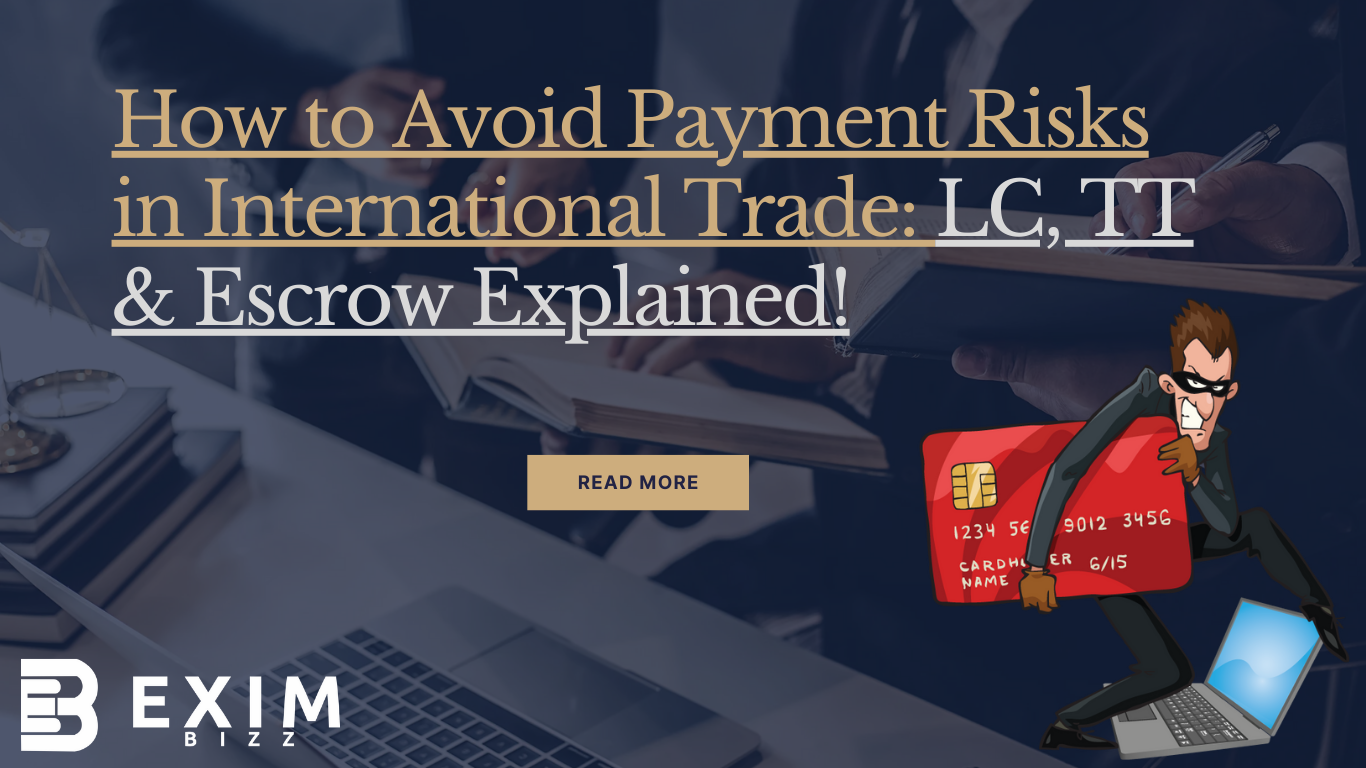“Empowering Indian Exports: A Deep Dive into the RODTEP Scheme and Its Impact on Global Trade”
In a rapidly globalizing world, trade has become one of the most important drivers of economic growth. For India, which is striving to become a $5 trillion economy, exports play a pivotal role in achieving this ambitious target. To strengthen its position in the global market and make Indian goods more competitive, the Government of India launched the Remission of Duties and Taxes on Exported Products (RODTEP) scheme. This initiative is aimed at incentivizing exporters and boosting the country’s export performance.
In this blog, we’ll delve deeper into what the RODTEP scheme is, how it works, and why it matters for India’s trade ecosystem.
What is the RODTEP Scheme?
The Remission of Duties and Taxes on Exported Products (RODTEP) scheme was introduced by the Indian government in January 2021. It replaces the earlier Merchandise Exports from India Scheme (MEIS), which was discontinued due to compliance issues with World Trade Organization (WTO) regulations.
Under the RODTEP scheme, exporters are provided refunds for duties, taxes, and levies that were previously non-recoverable. These include embedded costs such as central excise on fuel, electricity duty, VAT on fuel, mandi tax, and other state and local taxes that are not covered under the Goods and Services Tax (GST). By reducing these embedded costs, the scheme ensures that Indian goods remain price-competitive in international markets.
How Does the RODTEP Scheme Work?
The RODTEP scheme operates on the principle of remission, which means reimbursing exporters for the duties and taxes they have already paid but cannot recover through existing mechanisms like Input Tax Credit (ITC). Here’s how it works:
- Identification of Embedded Costs: The government identifies various duties, taxes, and levies that are embedded in the cost of production but are not refundable under GST or other schemes.
- Rate Notification: Export promotion councils and industry stakeholders collaborate with the government to determine sector-specific rates for remission. These rates vary depending on the product category and the extent of embedded costs.
- Issuance of RODTEP Rebate Certificates: Once an exporter ships their goods, they can apply for a rebate certificate through the Customs portal. This certificate allows them to claim refunds for eligible duties and taxes.
- Transferability of Rebates: One of the key features of the RODTEP scheme is that the rebate certificates are transferable. Exporters can sell these certificates to other entities if they choose not to use them directly.
- Global Competitiveness: By reducing the overall cost burden on exporters, the RODTEP scheme helps Indian products compete more effectively with goods from other countries that may have lower embedded costs.
Benefits of the RODTEP Scheme
The RODTEP scheme offers several advantages for exporters, industries, and the Indian economy as a whole:
- Enhanced Competitiveness: By refunding embedded taxes, the scheme reduces the landed cost of Indian products in foreign markets, making them more attractive to buyers.
- Compliance with WTO Rules: Unlike MEIS, which was challenged at the WTO for violating subsidy norms, the RODTEP scheme is fully compliant with international trade rules. This ensures that India avoids potential disputes while supporting its exporters.
- Boost to MSMEs: Small and medium enterprises (MSMEs), which often face challenges in managing high production costs, stand to benefit significantly from the RODTEP scheme. Lower costs mean higher profit margins and increased export opportunities.
- Sector-Specific Support: The scheme is designed to cater to the unique needs of different sectors, including textiles, agriculture, engineering, chemicals, and pharmaceuticals. This targeted approach ensures that even niche industries receive adequate support.
- Encouraging Value Addition: By covering taxes on inputs used in manufacturing, the RODTEP scheme encourages value addition within India, promoting domestic production over imports.
- Job Creation: Increased export activity leads to higher demand for labor, thereby creating employment opportunities across various sectors.
Challenges and Opportunities Ahead
While the RODTEP scheme has been widely welcomed, there are certain challenges that need to be addressed for its full potential to be realized:
- Awareness and Implementation: Many small-scale exporters, especially those in rural areas, may not be fully aware of the scheme or how to avail of its benefits. Greater outreach efforts are needed to ensure widespread adoption.
- Rate Rationalization: Some industries feel that the current rebate rates are insufficient to offset all embedded costs. Continuous dialogue between the government and stakeholders is essential to refine these rates.
- Digital Infrastructure: The success of the RODTEP scheme depends heavily on robust digital infrastructure. Streamlining online processes and ensuring seamless integration with customs systems will enhance ease of doing business.
Despite these challenges, the RODTEP scheme presents immense opportunities for India to expand its footprint in global trade. With proactive measures and collaboration between the government and private sector, the scheme can pave the way for sustainable export growth.
Conclusion
The RODTEP scheme represents a significant step forward in India’s efforts to promote exports and integrate into global value chains. By addressing the issue of embedded costs and aligning with international trade norms, the scheme strengthens the competitiveness of Indian goods abroad. For businesses looking to explore new markets and scale up their operations, the RODTEP scheme provides much-needed financial relief and encouragement.
As India continues its journey toward becoming a global trade powerhouse, initiatives like RODTEP will play a crucial role in unlocking the country’s export potential. Whether you’re an established exporter or a budding entrepreneur, now is the time to leverage this scheme and contribute to India’s vision of an “Aatmanirbhar Bharat” (Self-Reliant India).
Have questions about how the RODTEP scheme applies to your business? Reach out to us today, and let’s work together to grow your exports!






